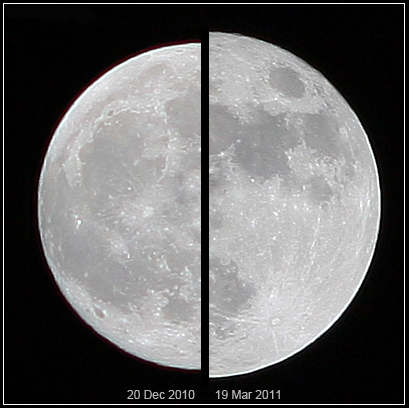A trio of Super Moons is gracing our summer skies
Meteorologist/Science Writer
Friday, July 11, 2014, 9:43 AM - The moon goes through a regular set of phases every month or so - full moon, half moon, crescent moon, new moon and then back through them to full again - but every now and then, we hear about a Super Moon. So what is a Super Moon?
Although astronomy has given us most of the information we have about the moon - how its orbit around the Earth creates the different phases we see, how big it looks to us in the sky based on its elliptical orbit, and even when we'll see phenomena like solar and lunar eclipses - there's a considerable amount of information built up about it from our cultures and mythologies too.
'Perigee full moon' is the term that astronomers have given us to describe the point when the full moon occurs at the same time as when the moon at its closest point to Earth in its orbit - perigee. Lunar perigees measured from orbit to orbit differ, ranging from between 356,400 and 370,400 kilometres from Earth, but 'perigee full moon' is specifically when the full moon happens closest to the minimum of that range. That occurs every 13-14 months.
'Super Moon' is an astrological term, with a slightly more broad definition, thus they show up more often. Astrologer Richard Nolle coined the term, back in 1979, which he said was "a new or full moon which occurs with the Moon at or near (within 90% of) its closest approach to Earth in a given orbit (perigee). In short, Earth, Moon and Sun are all in a line, with Moon in its nearest approach to Earth."
Now, the "within 90% of its closest approach" part of that might be a little confusing, as it's sort of a strange way of phrasing the idea. Basically, it's whenever the full or new moon coincides with when the moon is closer to us than 360,000 km. This can apparently result in up to six Super Moons in a year.

This year there are five Super Moons. Two were earlier in the year, with the new moons of January and February, with the remaining three filling out the summer. The first is coming up on Saturday night, July 12-13, with the full moon preceding perigee by about 21 hours (and a distance of 358,258 km). The second, which will also be the true perigee full moon for this year (at 356,896 km away), is on the evening of August 10, when full moon and perigee happen less than half an hour apart from one another. The third follows on the night of September 8-9, with the full moon lagging perigee by about 22 hours (with the moon 358,387 km away).
What can you expect to see during these Super Moons, or for that matter, the perigee full moon?
It's not always easy to gauge the size of the moon as we watch it in the sky (which is apparently one possible reason for the famous 'moon illusion'), but being closer generally makes a perigee full moon look around 14 per cent bigger than an apogee full moon, and it gives off about 30 per cent more light as a result.
To make sure your skies will be clear for checking out these Super Moons, tune in to The Weather Network or click on your local forecast here on www.theweathernetwork.com.



